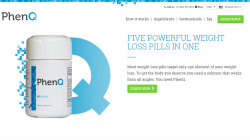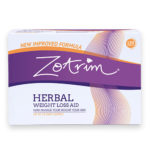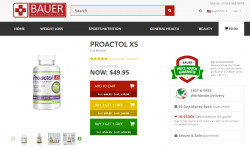Estrogel is an FDA-approved bioidentical estrogen therapy gel used for the treatment of symptoms associated with menopause. It is prescribed to reduce moderate to severe hot flashes and treat menopausal changes in and around the vagina. Estrogel delivers a consistent and effective dose and dries quickly without leaving any odor. It is available through an exclusive online offer, which includes an online medical consultation with a licensed healthcare provider. Before using Estrogel, it is important to consult with your healthcare provider to determine if it is the right treatment option for you.
Key Takeaways:
- Estrogel is an FDA-approved bioidentical estrogen therapy gel.
- It provides relief from menopausal symptoms like hot flashes and vaginal changes.
- Consult with your healthcare provider before starting Estrogel to ensure it’s the right treatment option for you.
- Estrogel is available through an exclusive online offer with an online medical consultation.
- Ensure safety and efficacy by following the prescribed dosage and staying in regular communication with your healthcare provider.
Benefits of Estrogel Usage
Estrogel offers several benefits for menopausal women in managing their symptoms and improving their quality of life. Here are some key advantages of using Estrogel:
1. Reduction of Hot Flashes and Night Sweats
Estrogel effectively reduces the frequency and intensity of hot flashes and night sweats, which are common symptoms experienced during menopause. By restoring estrogen levels in the body, Estrogel helps regulate the body’s temperature control and minimizes these discomforting episodes.
2. Alleviation of Vaginal Itching, Dryness, and Painful Sex
Menopausal changes can lead to vaginal dryness, itching, and pain during sexual activity. Estrogel provides relief by moisturizing and nourishing the vaginal tissues. By restoring natural lubrication, it improves comfort and intimacy, making sexual experiences more enjoyable and pain-free.
3. Hormone Replacement Therapy
Estrogel is a hormone replacement therapy that delivers bioidentical estrogen to the body. Bioidentical hormones are chemically identical to the hormones produced by the body. This similarity allows for better absorption and utilization, resulting in more effective symptom relief. Estrogel helps restore hormonal balance, addressing various menopausal symptoms beyond hot flashes and vaginal changes.
By incorporating Estrogel into a comprehensive treatment plan, menopausal women can experience significant improvements in their daily lives. It is essential to consult with a healthcare provider to determine if Estrogel is the right option and to discuss the potential benefits and risks based on individual circumstances and medical history.
Estrogel Dosage and Safety
When using Estrogel, it is important to follow the prescribed dosage and safety guidelines to ensure optimal results and minimize the risk of side effects. Here are some key points to keep in mind:
Dosage:
- Estrogel is applied topically to clean, dry, unbroken skin once daily.
- It should not be applied to red or irritated skin or directly on the breasts.
- After applying Estrogel, allow it to dry for up to 5 minutes before dressing.
- It is crucial to use the recommended dosage as directed by your healthcare provider.
Safety Precautions:
- Estrogel is flammable, so avoid smoking or being near an open flame until the gel has completely dried.
- It is essential to avoid contact with children to prevent accidental exposure.
- Inform your healthcare provider about any relevant medical history, existing conditions, or medications you are taking before starting Estrogel.
By adhering to the prescribed dosage and following safety precautions, you can ensure the effective and safe use of Estrogel. Regular communication with your healthcare provider is crucial to monitor the progress, address any concerns, and adjust the treatment plan if necessary.
| Benefits of Proper Estrogel Usage | Precautions for Safe Estrogel Usage |
|---|---|
| Reduces hot flashes and night sweats | Avoid using Estrogel during pregnancy |
| Alleviates vaginal itching, dryness, and painful sex | Be cautious of potential side effects, such as breast pain, headache, and vaginal discharge |
| Restores hormonal balance through bioidentical estrogen therapy | Report serious side effects, such as heart attack symptoms, blood clot signs, and high calcium levels, to a healthcare provider immediately |
Remember, Estrogel is a powerful treatment that must be used responsibly and under the guidance of a healthcare professional. By following the recommended dosage and safety guidelines, you can experience the benefits of Estrogel while minimizing potential risks and ensuring your well-being.
Estrogel Side Effects and Precautions
While Estrogel is generally well-tolerated, it is important to be aware of potential side effects and take necessary precautions. Common side effects may include breast pain, headache, vaginal itching or discharge, and thinning scalp hair. These side effects are typically mild and self-limiting, but if they persist or become bothersome, it is recommended to consult with a healthcare provider.
“I’ve been using Estrogel for a few months now, and I have experienced some breast tenderness and occasional headaches. However, the benefits outweigh these minor side effects for me, as my hot flashes have significantly reduced,” shared Jane, a satisfied Estrogel user. As every individual is unique, it is important to note that experiences may vary.
More serious side effects that should be reported to a healthcare provider immediately include heart attack symptoms, signs of a blood clot, stomach pain or tenderness, jaundice, memory problems, unusual vaginal bleeding, and high calcium levels. Although these side effects are rare, it is important to be vigilant and seek medical attention if any concerning symptoms occur.
Estrogel should not be used during pregnancy, as it can harm the unborn baby. Additionally, contact with children should be avoided to prevent accidental exposure. It is crucial to disclose any relevant medical history and existing conditions to your healthcare provider before starting Estrogel. Open and honest communication will help ensure that Estrogel is the right treatment option for you and minimize the risk of any potential complications.
Remember, Estrogel is a prescription medication, and it is important to follow your healthcare provider’s instructions regarding dosage and usage. Regular check-ins with your healthcare provider will help monitor the safety and efficacy of treatment and allow for any necessary adjustments. By staying informed and working closely with your healthcare provider, you can make the most informed decisions regarding your menopausal symptom management.
| Common Side Effects | More Serious Side Effects | Precautions |
|---|---|---|
| – Breast pain – Headache – Vaginal itching or discharge – Thinning scalp hair |
– Heart attack symptoms – Signs of a blood clot – Stomach pain or tenderness – Jaundice – Memory problems – Unusual vaginal bleeding – High calcium levels |
– Avoid use during pregnancy – Keep away from children – Disclose medical history to healthcare provider |
Conclusion
Estrogel is a FDA-approved bioidentical estrogen therapy gel that provides effective relief for the symptoms of menopause. As a convenient and easy-to-use treatment option, Estrogel has been shown to reduce hot flashes, alleviate vaginal changes, and improve overall quality of life for menopausal women.
By delivering a consistent dose of estrogen, Estrogel helps restore hormonal balance and provides relief from common menopausal symptoms. It is important to consult with a healthcare provider before starting Estrogel to ensure it is the right treatment option for you. Your healthcare provider will be able to evaluate your individual circumstances and medical history to determine if Estrogel is suitable and safe for you.
Estrogel offers women the opportunity to effectively manage their menopausal symptoms while minimizing potential risks. It is important to follow the prescribed dosage and communicate regularly with your healthcare provider to ensure the continued safety and efficacy of Estrogel. Incorporating Estrogel into a comprehensive treatment plan can provide relief and improve the overall quality of life during and after menopause.
In conclusion, Estrogel is a FDA-approved gel that can be a viable option for managing menopausal symptoms. With its consistent and effective delivery of estrogen, Estrogel offers relief for hot flashes and vaginal changes. However, it is important to discuss the benefits and potential risks with your healthcare provider before initiating treatment. Estrogel can be a valuable tool in managing menopause, but individual circumstances and medical history should always be taken into account.
FAQ
What is Estrogel used for?
Estrogel is an FDA-approved bioidentical estrogen therapy gel used for the treatment of symptoms associated with menopause, including hot flashes and menopausal changes in and around the vagina.
How does Estrogel work?
Estrogel delivers a consistent and effective dose of bioidentical estrogen, which helps restore hormonal balance in menopausal women.
How should Estrogel be applied?
Estrogel should be applied once daily to clean, dry, unbroken skin. It should not be applied to red or irritated skin or directly on the breasts. After applying Estrogel, allow it to dry for up to 5 minutes before dressing.
Is Estrogel flammable?
Yes, Estrogel is flammable. It is important to avoid smoking or being near an open flame until the gel has completely dried.
What are the common side effects of Estrogel?
Common side effects of Estrogel may include breast pain, headache, vaginal itching or discharge, and thinning scalp hair.
What are the serious side effects of Estrogel?
Serious side effects of Estrogel that should be reported to a healthcare provider immediately include heart attack symptoms, signs of a blood clot, stomach pain or tenderness, jaundice, memory problems, unusual vaginal bleeding, and high calcium levels.
Can Estrogel be used during pregnancy?
No, Estrogel should not be used during pregnancy. It is important to discuss safe treatment options with your healthcare provider.
Should Estrogel be used in children?
No, contact with children should be avoided to prevent accidental exposure to Estrogel.
What should I discuss with my healthcare provider before starting Estrogel?
Before starting Estrogel, it is important to disclose any relevant medical history and existing conditions to your healthcare provider to ensure the safety and efficacy of treatment.




![LA-3 Review [year] - Side Effects & Ingredients LA-3 Review ([year]) - Side Effects & Ingredients](https://www.miriamwellness.com/wp-content/uploads/2023/11/LA-3-Review-2023-Side-Effects-Ingredients-150x150.jpg)
![Nucific BIO X4 Review [year] - Side Effects & Ingredients Nucific BIO X4 Review ([year]) - Side Effects & Ingredients](https://www.miriamwellness.com/wp-content/uploads/2023/11/Nucific-BIO-X4-Review-2023-Side-Effects-Ingredients-150x150.jpg)
![Kirkland Glucosamine & Chondroitin Review [year] - Side Effects & Ingredients Kirkland Glucosamine & Chondroitin Review ([year]) - Side Effects & Ingredients](https://www.miriamwellness.com/wp-content/uploads/2023/11/Kirkland-Glucosamine-Chondroitin-Review-2023-Side-Effects-Ingredients-150x150.jpg)
![Regal Slim Review [year] - Side Effects & Ingredients Regal Slim Review ([year]) - Side Effects & Ingredients](https://www.miriamwellness.com/wp-content/uploads/2023/11/Regal-Slim-Review-2023-Side-Effects-Ingredients-150x150.jpg)